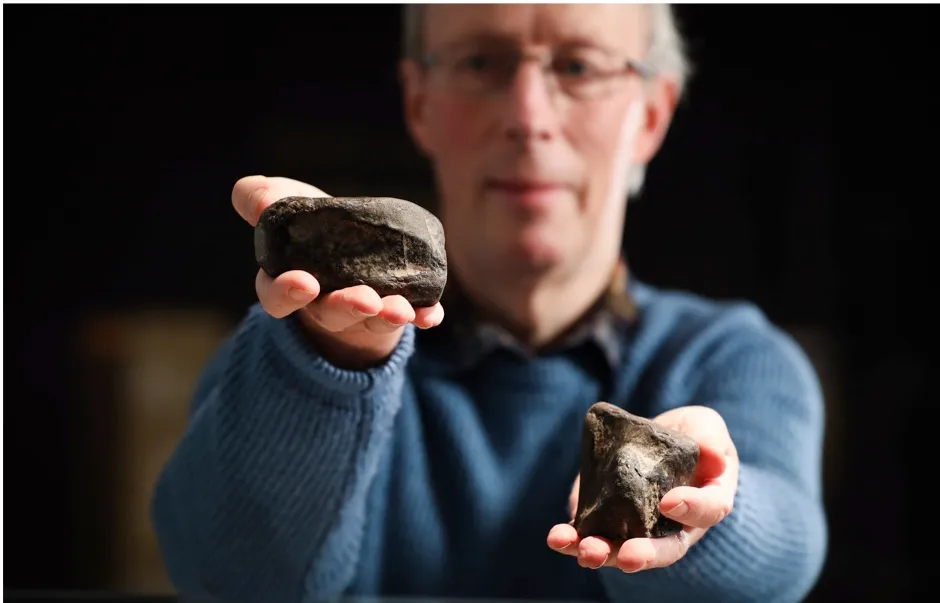Despite its proximity to the fossil-rich Great Britain, the island of Ireland has never had any dinosaur fossils found on it. Until now.
Two 200-million-year-old bones were found by Roger Byrne, the late schoolteacher and amateur fossil collector, who donated them along with many other fossils to Ulster Museum. At the time of donation, they were not formally identified. But now, a team of researchers at the University of Portsmouth and Queen’s University Belfasthave confirmed that the fossils came from dinosaurs. The bones were discovered in early Jurassic rocks found in Islandmagee, on the eastern coast of County Antrim.
Read more about life in the Jurassic:
- The Isle of Skye was a Middle-Jurassic dinosaur hotspot
- Cannibal dinosaurs may once have roamed late-Jurassic Earth
“The great rarity of such fossils here is because most of Ireland’s rocks are the wrong age for dinosaurs, either too old or too young, making it nearly impossible to confirm dinosaurs existed on these shores,” said study leader Dr Mike Simms, a curator and palaeontologist at National Museums Northern Ireland.Incredibly, only about 1 per cent of Irish rocks date from the time of the dinosaurs.
Using the latest technology, including high-resolution 3D digital models of the fossils, the scientists were able to confirm that the remains came from two different species. They think that one is from a plant-eater called Scelidosaurus, while the other is believed to be from a two-legged theropod carnivore, similar toSarcosaurus.

The team said that the two fossils could have been swept out to sea – alive or dead –before sinking to the seabed where they were buried and fossilised.
“Scelidosaurus keeps on turning up in marine strata, and I am beginning to think that it may have been a coastal animal, perhaps even eating seaweed like marine iguanas do today,” said Prof David Martill, from the University of Portsmouth.
This is a hugely significant discovery for Ireland, but also for palaeontologists around the world. “Despite being fragmentary, these fossils provide valuable insight on a very important period in dinosaur evolution, about 200 million years ago. It’s at this time that dinosaurs really start to dominate the world’s terrestrial ecosystems,” said University of Plymouth researcher Robert Smyth.
Reader Q&A: What did dinosaurs evolve from?
Asked by: Adam King, Huddersfield
Dinosaurs are a type of reptile, and theyevolvedfrom another group of reptiles called ‘dinosauromorphs’ around 250 million years ago. The dinosauromorphs were small and humble animals, and they didn’t look anything likeT. rexorBrontosaurus. Instead, they were the size of house cats, walked on all fours, and had long, skinny limbs like a greyhound. The dinosauromorphs weren’t at the top of the food chain, but their speed and agility ensured their success.Read more about dinosaurs:
